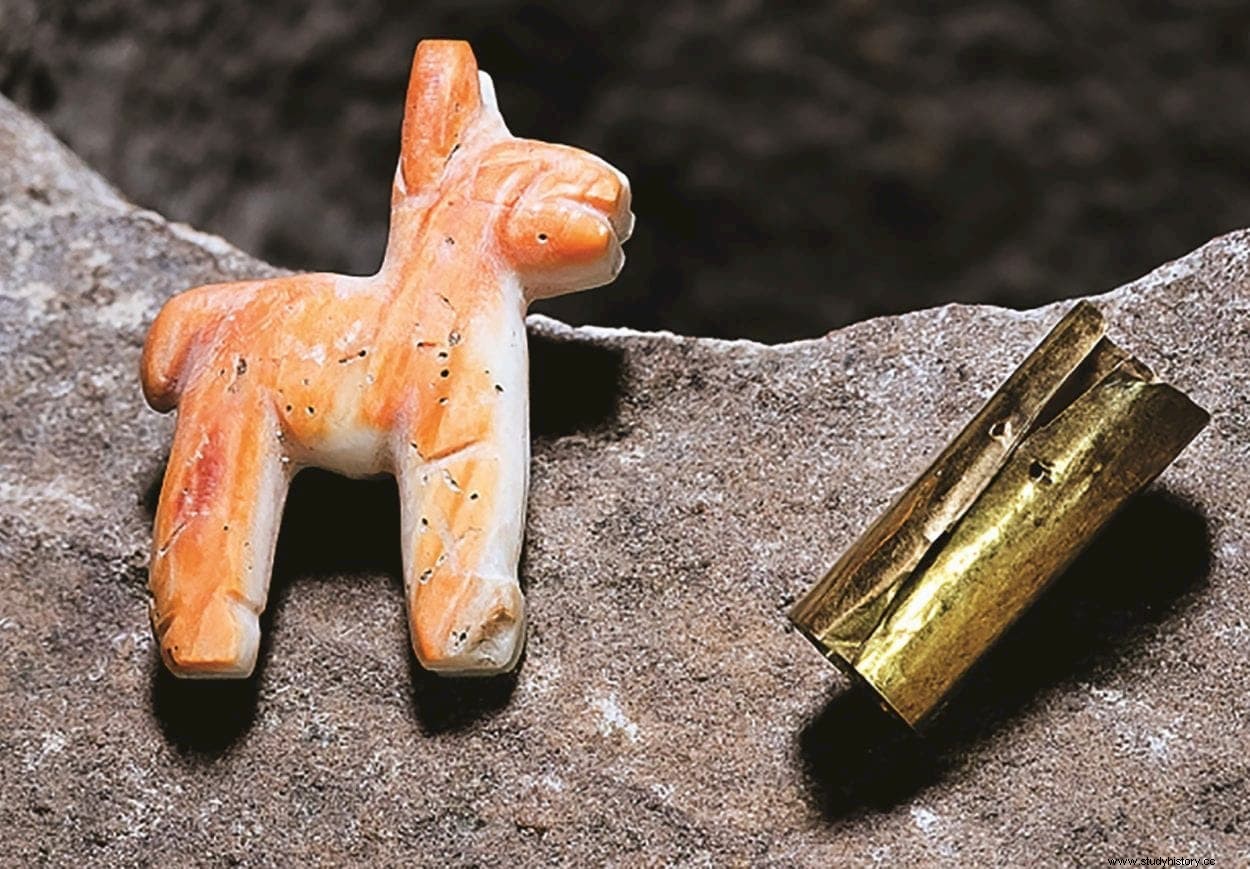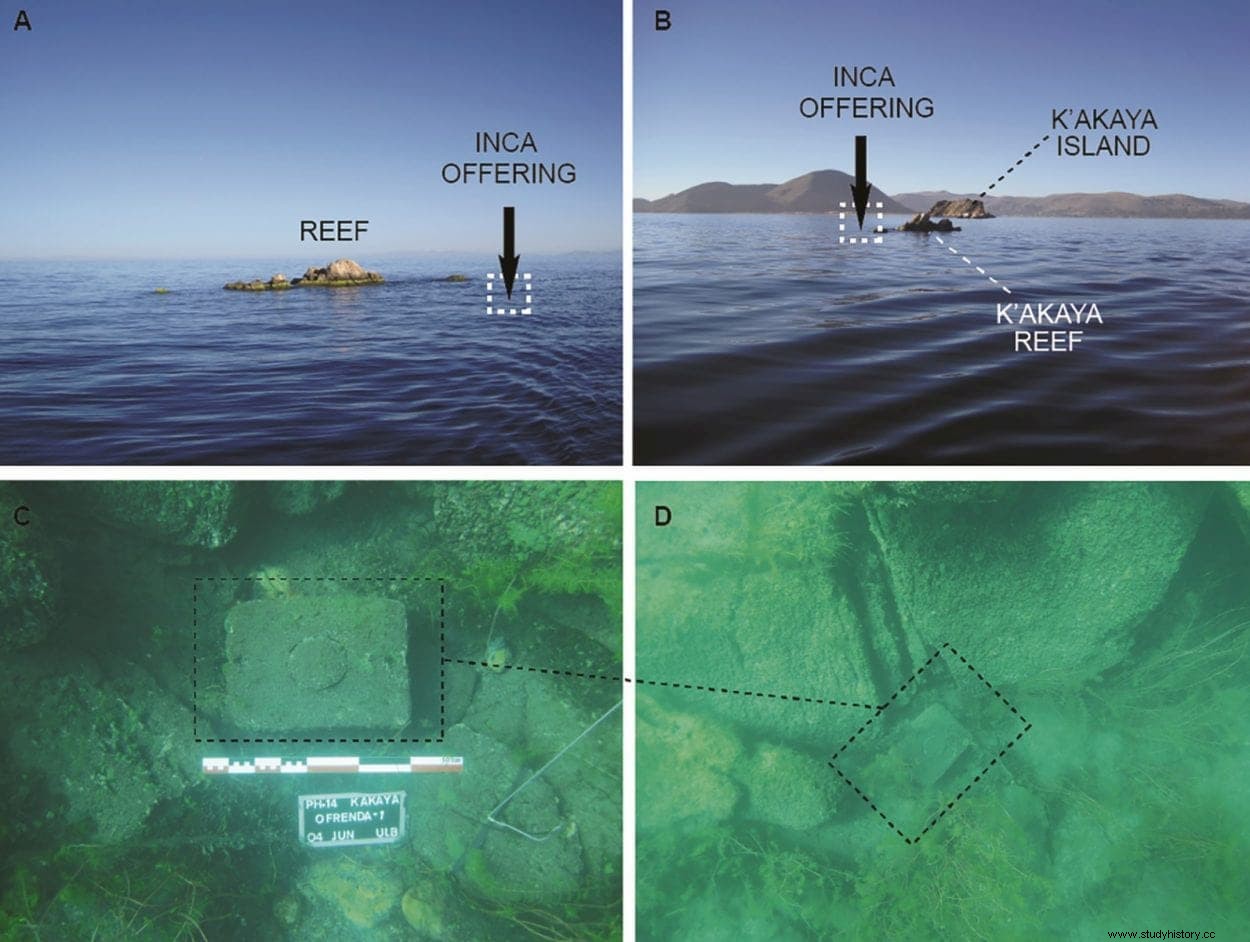A llama carved from a spondylus shell and a cylindrical gold foil object are the contents of a carved stone box, an offering, found at the bottom of Lake Titicaca, according to researchers from the University of Pennsylvania and the Free University of Brussels. The offering, found near an island in the lake, was not located where offerings had been found in the past.
We knew the Incas made some form of ritual offerings and that they made them in the lake said José Capriles, an assistant professor of anthropology at the University of Pennsylvania. Chronicles from the 16th and 17th centuries indicate that there were submerged offerings.

Lake Titicaca is located in the Andes between Bolivia and Peru. It is the largest lake in South America and was important to many cultures, including the Tiwanaku and the Incas.
In 1977, amateur divers found offerings, artifacts that could have been part of offering packages near Isla del Sol, but these were not intact. Professional divers, between 1988 and 1992, investigated the Khoa Reef area and found pre-Inca and Inca artifacts, including stone boxes with miniature figures. Recent excavations show that the Khoa Reef was an important ceremonial site for the Inca and earlier societies; however, this new group of artifacts was not found on the Khoa reef, but rather on the K'akaya reef.
Since 2012, the Free University of Brussels has implemented a research program with the aim of locating and inventorying the underwater heritage of Lake Titicaca said Christophe Delaere. Our team has done a systematic survey around the islands and reefs on the Bolivian side of Lake Titicaca.

The K'akaya archipelago is west of Challapata Bay on the eastern shore of Lake Titicaca and consists of one main island and three smaller ones. K'akaya Reef is the last islet in the small chain and is covered in bird droppings.
Divers recovered the box intact although currents had eroded one side. The box was hermetically sealed, but not waterproof. In the box, under the mud that had leaked, rested the shell of spondylus and the rolled gold foil.
An indication that these boxes contain artifacts valuable enough for offerings, in addition to gold foil, is the llama made from spondylus shell. The closest place the Inca could get this spiny oyster shell was in the warm ocean waters off the coast of Ecuador.
Finding this box in a new location suggests to researchers that Lake Titicaca was a site of ritual and ceremonial activity for the Incas. Similar offerings are found in other parts of what was the Inca Empire, some on land and others in water, but researchers think the lake was important in the consolidation of the empire.

According to Capriles, when the Incas spread out from Cuzco in Peru, Lake Titicaca became a focal point. Previous archaeological evidence indicates that many of the islands, reefs, and archipelagos contain ruins of temples and other monumental architecture.
According to Capriles there are indications that Lake Titicaca was a pilgrimage center for the Incas, but also served as a focal point for alliances with other groups. Spanish myths about the Incas dumping their gold into Lake Titicaca are apparently false, but the lake contains much more yet to be discovered, the researchers said.
The inner underwater world remains largely unexplored and offers exceptional opportunities to understand prehistoric societies Delaere said. The underwater heritage of Lake Titicaca still has many surprises to reveal .
